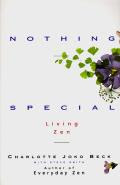 Why do the 'burbs suck? Why is spending time in an older city like Boston vacation-worthy while spending that same amount of time among strip malls feels awful? For years I have visited different cities and been unable to articulate what exactly distinguishes the good from the bad. The husband and wife architect team of Andres Duany and Elizabeth Plater-Zyberk find those words in their excellent book Suburban Nation.
Why do the 'burbs suck? Why is spending time in an older city like Boston vacation-worthy while spending that same amount of time among strip malls feels awful? For years I have visited different cities and been unable to articulate what exactly distinguishes the good from the bad. The husband and wife architect team of Andres Duany and Elizabeth Plater-Zyberk find those words in their excellent book Suburban Nation.I learned that the urban building codes that guided development for hundreds of years were brusquely shrugged off with the emergence of the automobile after WWII. Diverse communities were exchanged for specialized niches of commerce, industry, and the residential. At the time there existed a need for zoning by use; industrial pollution was seriously harmful to the peoples' health. Also, cheap gas and federally subsidized highways made it efficient to build further away from the cities' centers. Now, as we recognize the true cost of suburban sprawl--environmental, social, economic--we appear trapped in an outdated mode of development.
From this larger picture Duany narrows his focus to the renaissance of traditional urban planning. It is remarkable how specific, and I believe effective, his suggestions are. For example, skinny streets. Nothing feels crummier than standing next to an eight-lane road. Narrow roads that allow easy pedestrian crossing are an often overlooked blessing to a city. Requiring buildings to be built near the sidewalks creates a more intimate space that transforms a tedious suburban drive into a pleasant urban walk. Tips like these are found throughout Suburban Nation. I am willing to believe in their effectiveness because of my experience in older cities. Without exception, the most charming neighborhoods have been built along these lines. I guarantee your favorite city was as well.
The only downside to the book was the authors' tone. This might be getting picky, but I was distanced from the message by their ranting. It is apparent these architects have spent years battling narrow-minded developers and zoning boards. I understand their frustration. But their thinly veiled anger coupled with a sloppy book binding ultimately undermined their authority. Still, if you are interested in why urban planning at all this book is a home run.

